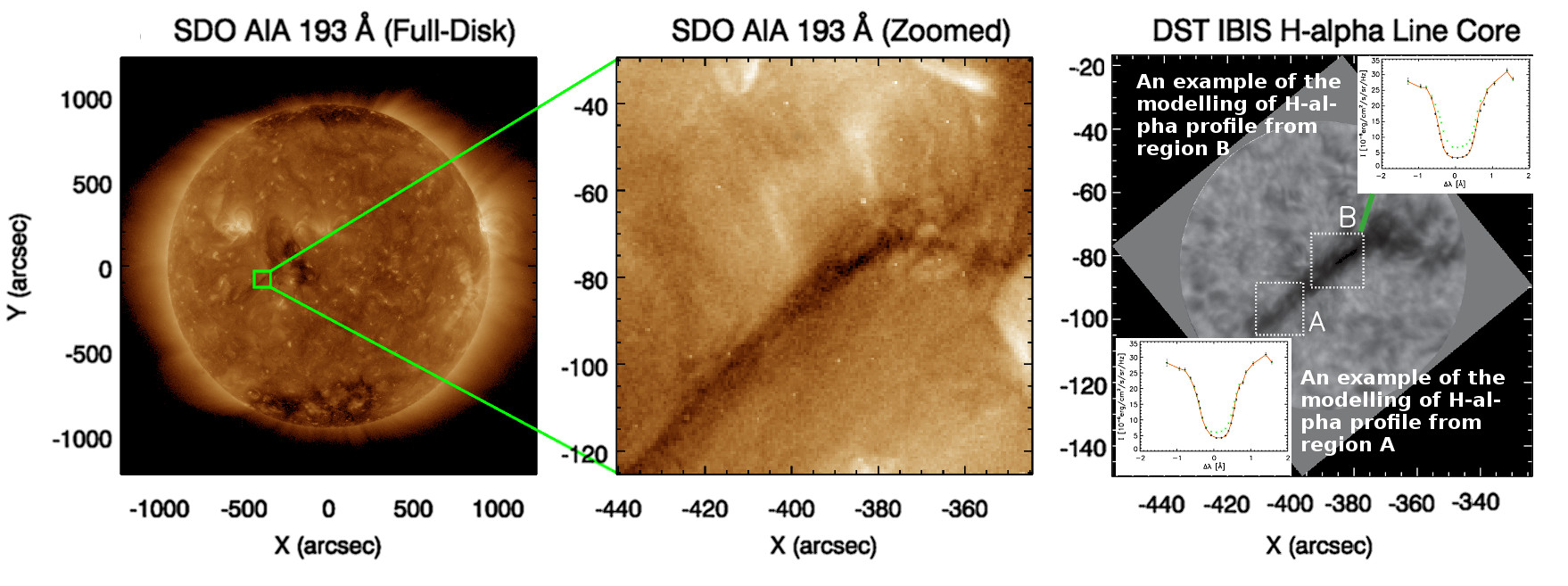The European Solar Telescope will provide us with spectroscopic data of filaments at much higher resolution than ever before, leading to a better understanding of the physical processes responsible for their activation. A post written by Dr. Pavol Schwartz, from the Astronomical Institute of the Slovak Academy of Sciences (Slovakia).
 Quiescent filament observed with SDO (left) and IBIS at the Dunn Solar Telescope (right). Image: Schwartz et al. 2019, A&A 631, A146.
Quiescent filament observed with SDO (left) and IBIS at the Dunn Solar Telescope (right). Image: Schwartz et al. 2019, A&A 631, A146.
During the last 20 years, new high-resolution instruments have provided us with spectroscopic and spectropolarimetric observations of better and better quality. Those data allow us to infer the physical properties of solar filaments, such as temperature, gas pressure, plasma density and magnetic field.
Indeed, the spectroscopic observations of quiescent filaments in ultraviolet (UV) and extreme-ultraviolet (EUV) lines carried out by the SOHO satellite, often complemented with neutral hydrogen spectra obtained from the ground, opened the door to plasma diagnostics using sophisticated models based on radiative transfer – the physical theory describing how spectral lines in the radiation emitted from the solar surface are modified after passing through the filament plasma.
Filament temperatures between 5000 and 10,000 K were inferred from such a modelling, together with densities 6 orders of magnitude larger than those observed in the lower solar corona. Also, it was found that cool filaments are surrounded by hot envelopes visible only in UV and EUV spectral lines. Such envelopes are called EUV filament channels. They have temperatures from several tens to hundreds of thousands Kelvin and much lower densities than the cool filaments themselves.
Recently, high-resolution observations of visible and infrared lines have allowed us to model small-scale active filaments and the fine structure of very dynamic quiescent filaments in state of activation. The accompanying figure shows a quiescent filament observed in the H-alpha line with IBIS at the Dunn Solar Telescope. This filament erupted one day later. The left and middle panels of the figure display images of the filament in the EUV corona at a wavelenght of 193 Å from the AIA instrument on the Solar Dynamics Observatory. The right panel shows a map of the H-alpha line core intensity as observed by the IBIS instrument, together with two examples of fits to the observed line profiles. The results of the modelling show that the filament is not activated uniformly – one part (region A) is more dynamic while another part (region B) is heated.
The European Solar Telescope, a 4-meter class telescope to be built in the Canary Islands, will provide us with spectroscopic data of solar filaments at much higher resolution that is currently possible. This will lead to further advances in the characterization of these structures and, consequently, to a better understanding of the processes responsible for their activation.
For more information, check out https://arxiv.org/abs/1910.03607
